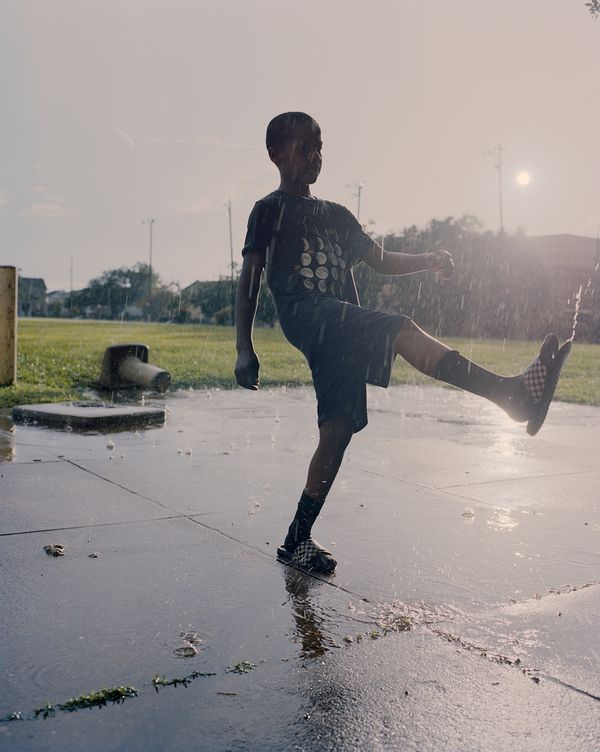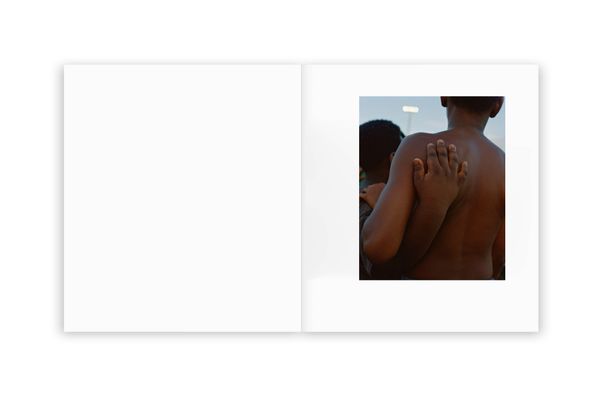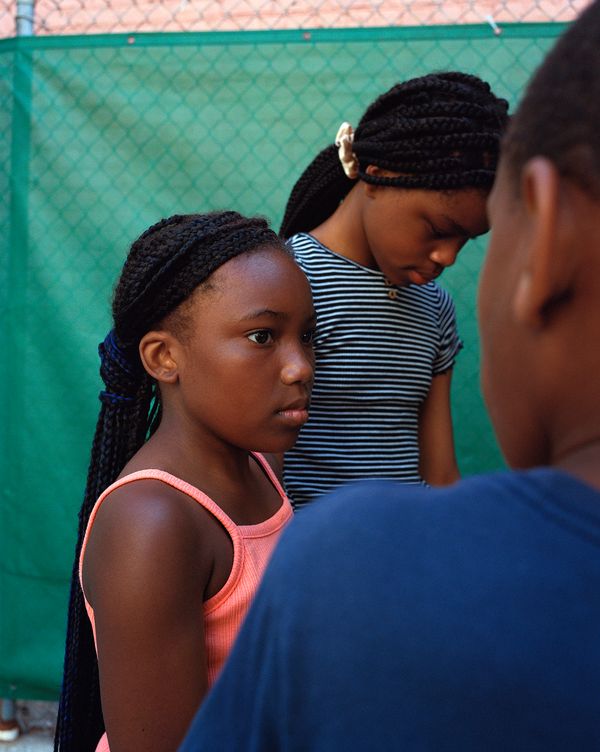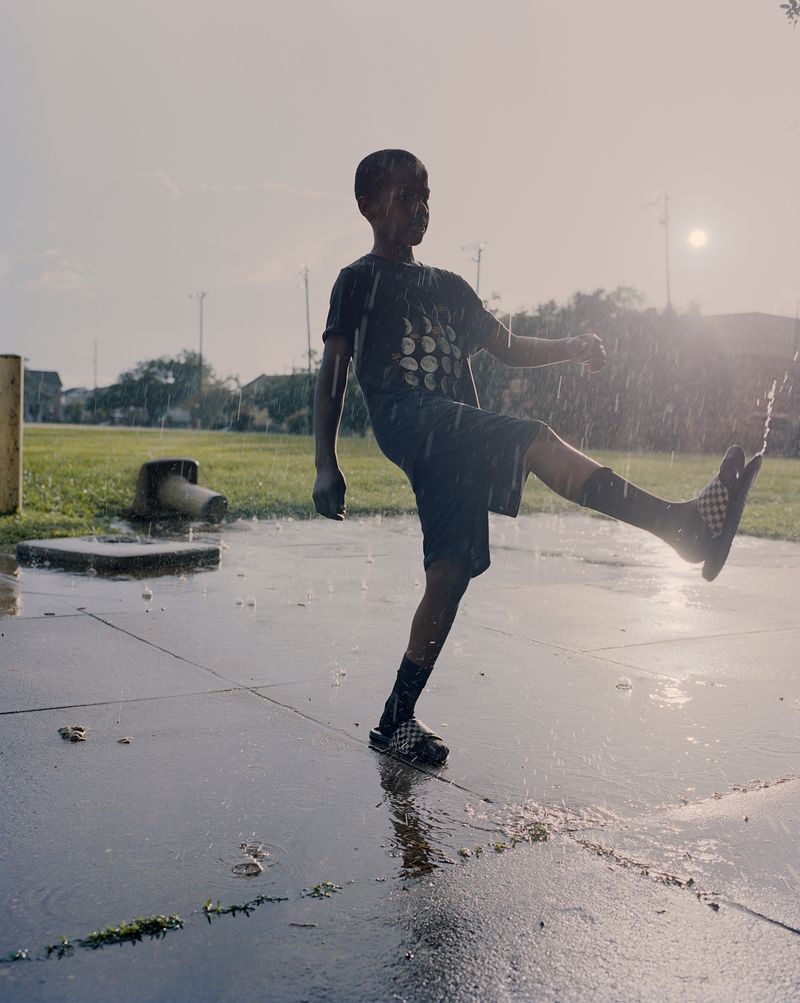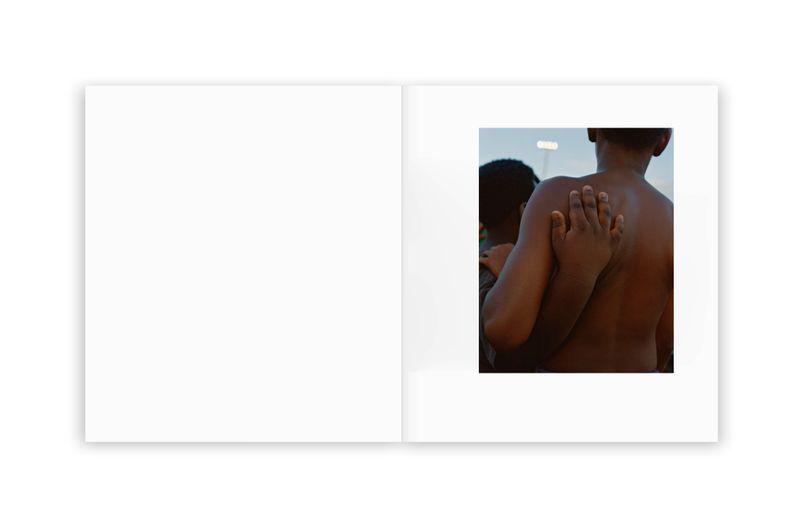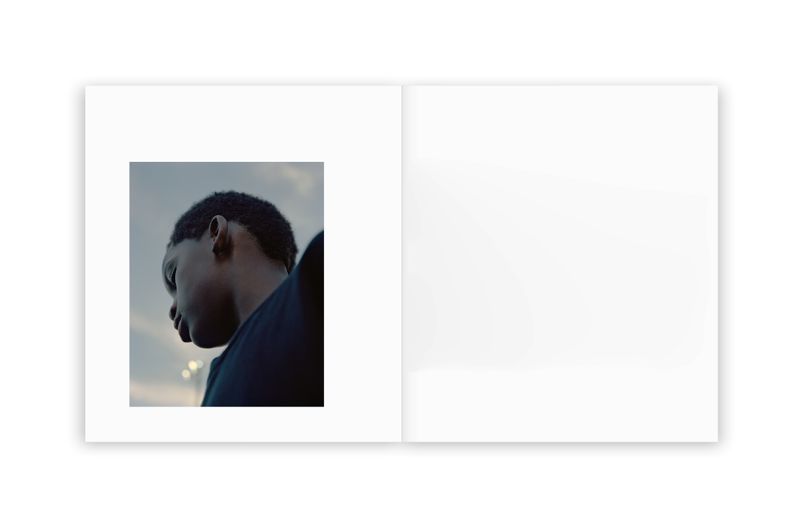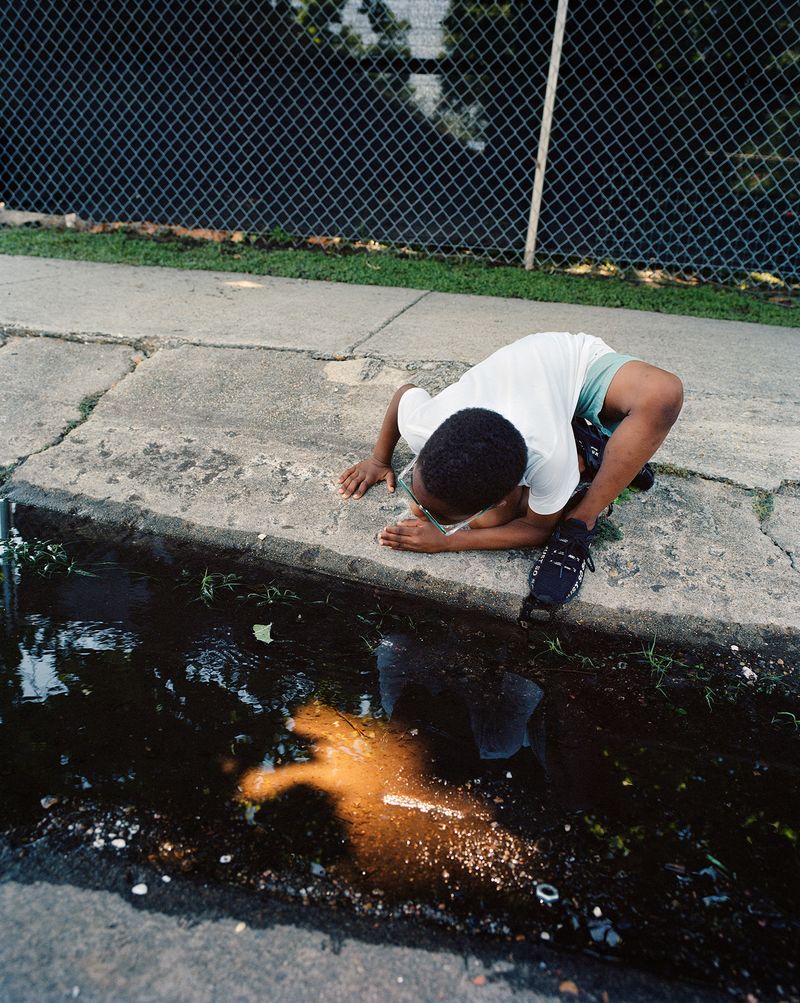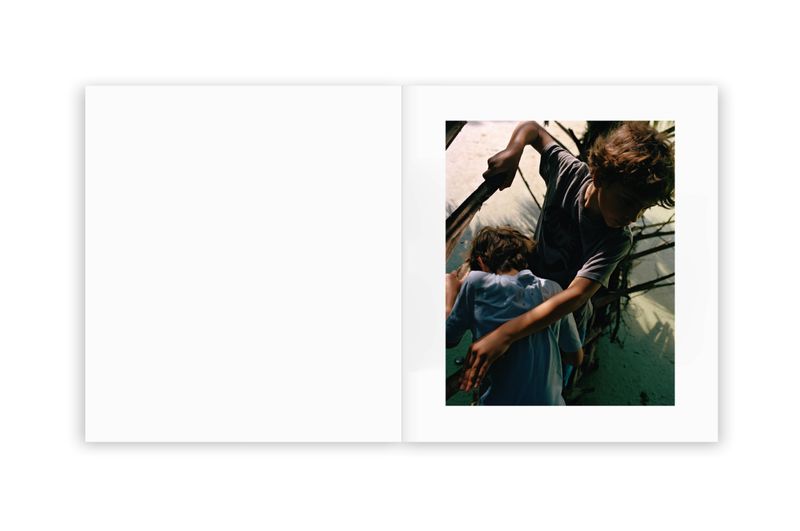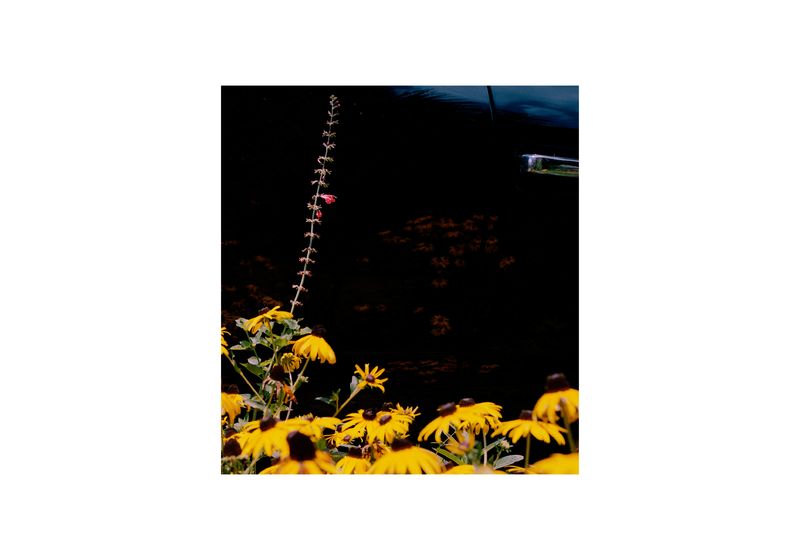Photobook Review: Mystery Street by Vasantha Yogananthan
-
Published20 Jul 2023
-
Author
- Topics Daily Life, Documentary, Photobooks
Located somewhere in-between New Orleans and an imaginary playground, Mystery Street is a lyrical exploration of childhood and endless summer days, marking a turning point in Yogananthan's photographic negotiation with reality.
A wire mesh runs on the background, wrapped in a green tarp. Concrete, grass, white lines on the ground of a basketball court. Hints of a place - or more than one?, we wonder as we flip through Vasantha’s Yogananthan Mystery Street’s pages - come and go. They alternate and repeat. Their weaving shapes a landscape that isn’t real, and though very close to some truth. It’s imaginary, but inhabited every day by a group of fifteen kids, aged 8-12, somewhere under the burning sun of New Orleans. “It is summertime, and school’s over”, says Yogananthan. “Day after day, a kind of micro-society builds up. When the kids are together, they really are oblivious of their surroundings. It is a new world, and it belongs to them only”.
Mystery Street is a book about endless summer days. It is a book about boredom - “I think I had forgotten about that”, observes Yogananthan, “of how bored you are all the time as a kid”. It is about empty time, and the easiness of silence that is peculiar to childhood - “You can be with them and not speak, and it’s not going to be awkward”, he says. It is ultimately about the way childhood defines us all, with its blurry, though all-encompassing way of doing so.
Images move within the space of the page. The way they bounce from one edge to the other, and change dimension, echoes the movements of the kids’ bodies. As if their leaps and contractions could push and pull the book’s structure, making it flow around their physical interaction. Nothing ever feels still. “One very important thing for me, after having worked for seven years in the opposite direction with A Myth of Two Souls, was to go back to a form of photography that is not staged. One where accidents can happen, and movement can make it back into the frame. But as you decide not to stage, how do you then make pictures that don’t feel like they’ve been done in the 60s, or 70s, or 80s by street or documentary photographers?”.
The question had been staying with him for more than four years, unsolved. Until, as he put it, “something happened” in New Orleans: “Sometimes with one subject, one territory or one community, something changes. And it did over that summer”. A few photographs show kids looking fiercely into the camera. More often, they look up or down. Their eyes are shadowed. What are they thinking, where are they really? A lot of Mystery Street is about the kids’ individual identity, and the places they go to when they get absent, and look sideways. Though, it’s the kids' collectiveness that really binds the book together. Photographs where their bodies are visually entangled. “Many would speak of collaborative portraits. They’re not: I’m the one deciding when I press the shutter. Deciding where I’m standing. I’m the one in charge”, Yogananthan points out. "More than collaborative, they are maybe participative: they are very free, within the frame. Lots of times in the book you’ll find a diptych where one kid moves closer to the camera, and by doing so they're constructing the picture”.
Being in charge means actively questioning, for example, what the right distance and height can be. “I started photographing at the kids’ level. I didn’t want to have any photographs looking down. Then, in order to be close to the subject, but at the same time create a picture where there would be a lot of space, I started working with a wide-angle lens. It is a device that has been used quite a lot in movies. It feels like you’re there, above the photographer’s shoulder. It stops being about what the landscape looks like, but about what it feels like, the colors, the light, the atmosphere of it all”.
The setting of a story so fleeting, existential, and subtle could not be “too down to earth”, Yogananthan says. When going through the book, he describes, “you find yourself somewhere. Then, before the sequence ends, a new place enters, there is a sort of overlap, and then you leave the space you were in before. It was important to shape a world where different kids and places could meet, even if they don’t in real life. This way, the space became literally a playground. This imaginary playground where kids are doing stuff, and thinking, and laughing, and being sad. By taking out all the elements that were too close to reality, the work could then be about feelings. It could be about thoughts”.
If their gaze and techniques are certainly very different, A Myth of Two Souls and Mystery Street share a core concern: that of constructing specific worlds where imagination plays a key role, and where something of the real must be diminished for other dimensions to come to the surface. “The kids I would meet with every day are growing up in one of the toughest neighborhoods of New Orleans. I was wondering if I would show the landscape where they live as it is. I decided not to. Showing it would mean again re-inforcing the view people have on specific black communities. By removing all the toughest views of the neighborhood, instead focusing on the basketball court and the park only, it felt like a safe, genuine space was created for the kids to truly express themselves”.
What remains of Louisiana's landscape is delicate, though immersed in contrasts. The photograph on the cover shows very light, yellow flowers. They rise against a black background that seems to swallow all light. “The South of the US has this tropical vibe, there’s huge rains, then the sun comes back, and the landscapes reflect the light in a very specific way”, Yogananthan describes. “Though, there is something dystopian to it - it is one hundred percent concrete”. The dusk jacket is shiny, and bounces light off. What at first glance seems black, at a closer look isn’t. “This is really New Orleans’ light”, he says.
--------------
Mystery Street is published by Chose Commune
Photographs: Vasantha Yogananthan
Texts: Taous Dahmani & Vasantha Yogananthan, Clément Chéroux & Agnès Sire
Editorial direction: Cécile Poimboeuf-Koizumi
Design: Bureau Kayser
164 pages
26,5 x 29,5 cm
French / English
Co-publication Chose Commune / Fondation Hermès
--------------
All photos © Vasantha Yogananthan
--------------
Vasantha Yogananthan (b.1985) co-founded the publishing house Chose Commune in 2014, to then move onto the seven-book project A Myth of Two Souls inspired by the epic Indian tale The Ramayana. He was awarded several awards including the Prix Levallois and an ICP Infinity Award, and had solo exhibitions at Musée de l’élysée in Lausanne, Chanel Nexus Hall in Tokyo, Deck in Singapore, and Belfast Photo Festival among others. His latest project Mystery Street is on show at the Henri Cartier-Bresson Foundation in Paris, and will be exhibited at ICP in New York.
Camilla Marrese (b.1998) is a photographer and designer based between Italy and The Netherlands, graduated from MA Information Design at Design Academy Eindhoven (NL). Her practice intersects documentary photography, design for publishing and writing, aiming for the expression and visual articulation of complex issues.
